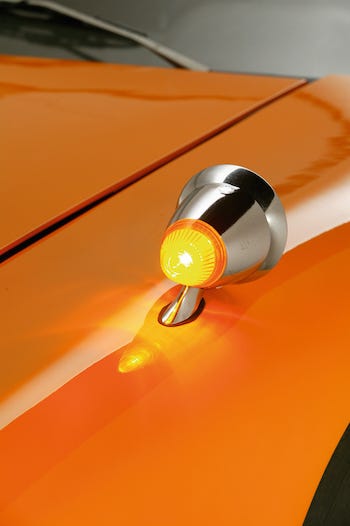This groovy car, jointly developed by Covestro (part of Bayer AG at the time) and BMW, was a hit at the 1967 K show in Düsseldorf, Germany.
July 25, 2019

In the grooviest year on record, a car with a fully plastic body drove considerable attendee interest at the K 1967 show in Düsseldorf, Germany. The Bayer K67 was jointly developed by Covestro (part of Bayer AG at the time) and BMW and was designed by Hans Gugelot’s influential design bureau in Ulm, Germany.
The Bayer K 67 was one of the world’s first automobiles with an all-plastic body. The “polyurethane car,” as it has been called, struck a dissonant tone at a time when automotive design was largely articulated around metal and glass. It also included some innovations that, in time, would be widely adopted by carmakers. Covestro’s Jochen Hardt briefly rekindled this vision of the future circa the Sixties at the K 2019 Preview earlier this month.
Beyond the full-on embrace of plastics, the Bayer K67 also featured a design innovation that would be replicated in passenger cars many years later—the integration of turn signals in side mirrors.
There was nothing terribly novel under the hood—it was essentially the two-liter, four-cylinder engine that powered the BMW 2000 TI and Coupé 2000 CS of that time—but because the car weighed only 850 kilograms (1,873 pounds), it had considerable pep and reached a maximum speed of 190 kilometers/hour (118 mph), according to Welt.de.
When the car was shown at the Design Engineering Show in Chicago the year after K 1967, it elicited this comment from the President of Mobay Chemical Co., as archived on AllCarIndex. “The technique of combining various types of high-strength plastic sheeting materials with high-density rigid urethane film as the core section has a message for every field of product engineering where high strength-to-weight ratio, low tooling and production costs, assembly-line scheduling, and almost unlimited flexibility in materials and processing methods are essential or even desirable values,” said B. R. Nason.
Only five models were built, said Hardt at the K 2019 Preview, two of which are still in existence: One is on exhibit at the Deutsches Museum in Munich; the other one is parked at Covestro headquarters in Leverkusen, Germany.
Flash forward a little more than 50 years, and Covestro again will explore the intersection of plastics and mobility at the K show. This time, however, the emphasis at booth A 75 in hall 6 will be on the car interior.
|
One of the design innovations in the Bayer K 67 car was embedding turn signals in the side mirrors. |
“The car of the future will be a multifunctional, mobile living and working space,” writes Stephen Moore in his article, “Covestro reinventing mobility at K 2019.” “We are particularly focused on the interior design, which can be both a living and working space in an autonomous vehicle, offering customized experiences to the user,” Hardt explained in Moore’s article. “Future vehicle concepts for electromobility offer car manufacturers opportunities for completely new room concepts and additionally open up a new ground for brand differentiation,” added Hardt.
And just like in 1967, plastics play a critical supporting role in making that happen.
To learn more about the future of mobility as Covestro sees it, read Moore’s piece here.
About the Author(s)
You May Also Like





